Recently, [my wife] suffered an automotive breakdown while driving our 2008 Toyota Corolla CE. I was not present for this one, but sounded like a normal driving experience until she stopped at a red light. When it turned green, she pressed the gas, and very little happened other than the “check engine” light illuminating. She got towed to the dealer, who came back with this assessment:
“NO LIGHTS ON WHEN VEHICLE WAS PULLED IN FOUND CODES P0606 AND P0607 IN SYSTEM FOR ECM. VEHICLE HAS EXHAUST LEAK BUT IT IS AFTER THE SECOND EXHAUST SENSOR SO IT SHOULD NOT BE EFFECTING ISSUE. VEHICLE WAS DRIVEN AND DROVE NORMAL AND NO LIGHTS CAME BACK ON. BOTH CODES INDICATE POSSIBLE ECU GOING BAD START WITH ECU REPLACEMENT.”
They wanted $1,031.76 for this ECU replacement. Additionally, they said because of the exhaust leak, they want to replace the entire exhaust system for $3,296.69. So, total damage would be $4,328.45. I think we can do better than that.
I did know there was an exhaust leak, but until this incident, I was not aware that such a thing could make an ECU vomit all over itself. While researching this before hearing back from the dealer with the prognosis, I found [this article]. Thanks, Robert from Massachusetts!
I happened to have already ordered a new catalytic converter, resonator and intermediate pipe, and muffler kit since I knew about the exhaust leak previously. I’ve already done this job before, and used Walker brand parts. And here I am, maybe 10 years later, needing to do it again. So, this time I paid for premium stainless steel parts from Magnaflow & BRExhaust. Total with tax & shipping was $1,118.33. I also ordered new oxygen sensors, both upstream and downstream, because Robert’s article alludes to the fact that it could be just the sensor itself even without the leaks. And plus, why fight with getting an old sensor out just to install it in a brand new system – let’s go brand new the whole length (except the exhaust header).
Now, when I talked to the Toyota tech, he sounded like he’d had some years under his belt. He basically told me, even though the book says to replace the ECU, it is his experience that exhaust leaks can cause this behavior. So, he said to install my new exhaust, and if the code doesn’t come back, great! If it does come back, well, we’ll deal with the next thing. Since the exhaust system replacement was the majority of the quote’s price, this approach makes perfect sense to me!
So on Friday, I had a half-day at work, and got to removal of the old system. I had spent a couple days prior soaking the catalytic converter mounting bolts and the upstream oxygen sensor in penetrating oil. I really only had to remove (in order) the exhaust header heat shield, the upstream oxygen sensor, and the header-to-catalytic-converter mounting bolts. I had the old system out in under an hour!
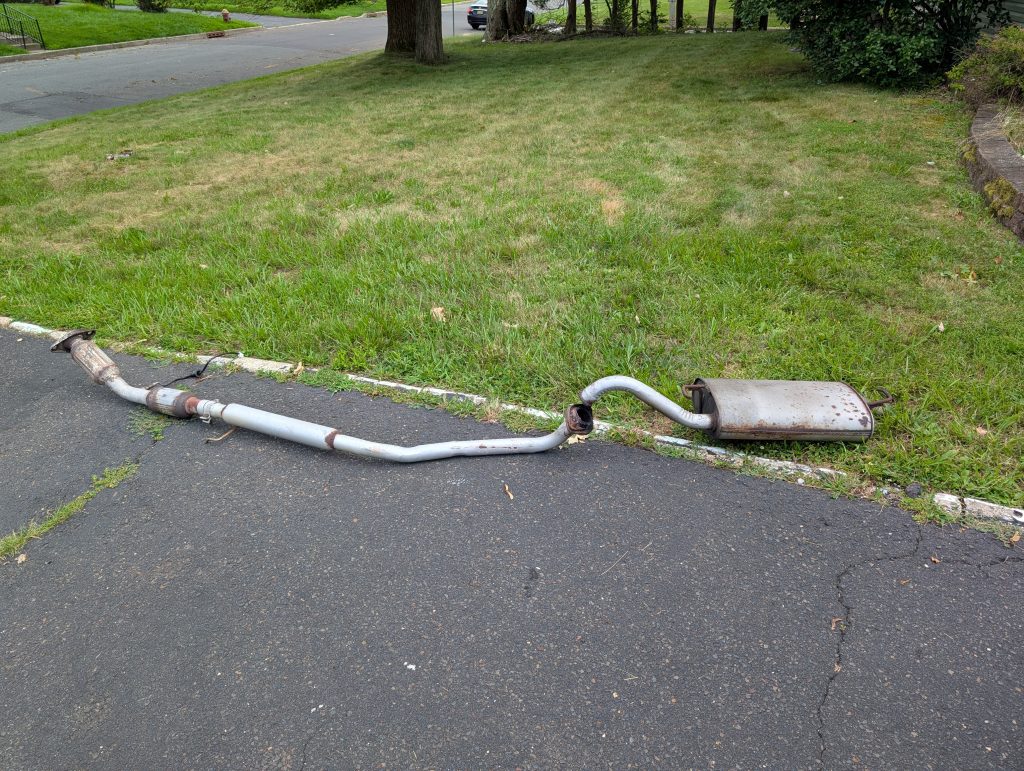
So is there a leak?
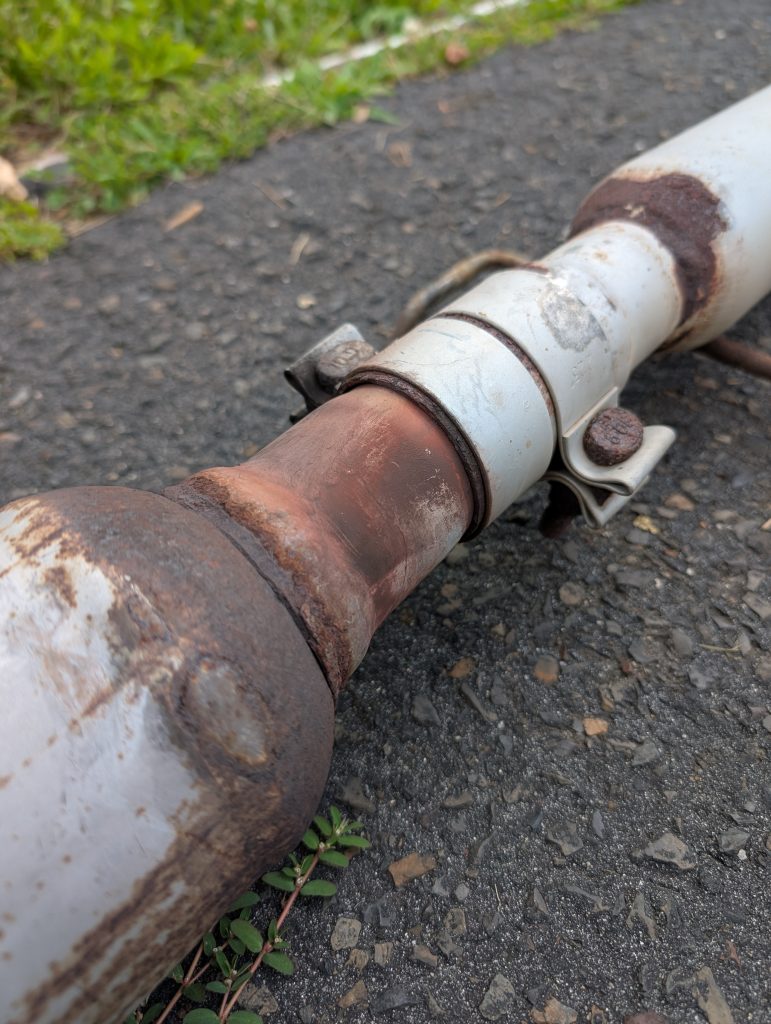
Yeah, some here, but then the big one…
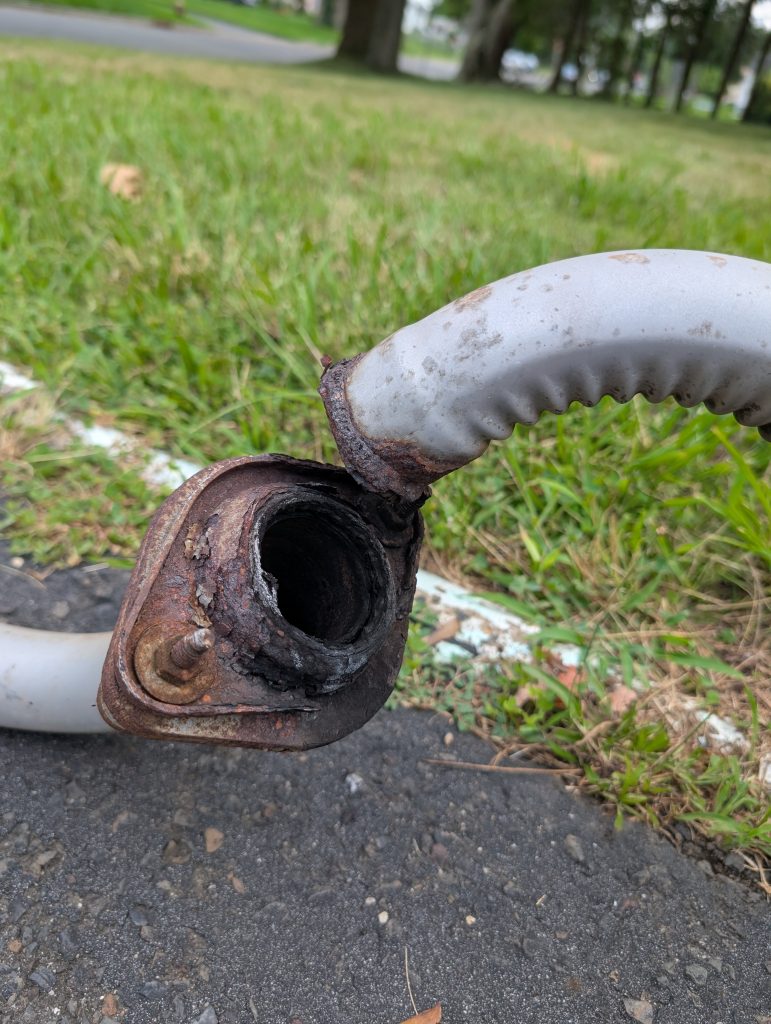
Yikes! The muffler was simply decorative! Cheap ‘ol Walker stuff, it completely let go right at the weld, leaving the flange behind on the intermediate pipe. Never again!
And then I got a 22mm wrench on the upstream oxygen sensor and pulled with all my might. I was able to get it free, all it took was being slightly burned by the hot exhaust system to give me the strength! I took it and inspected it closely, and saw this:
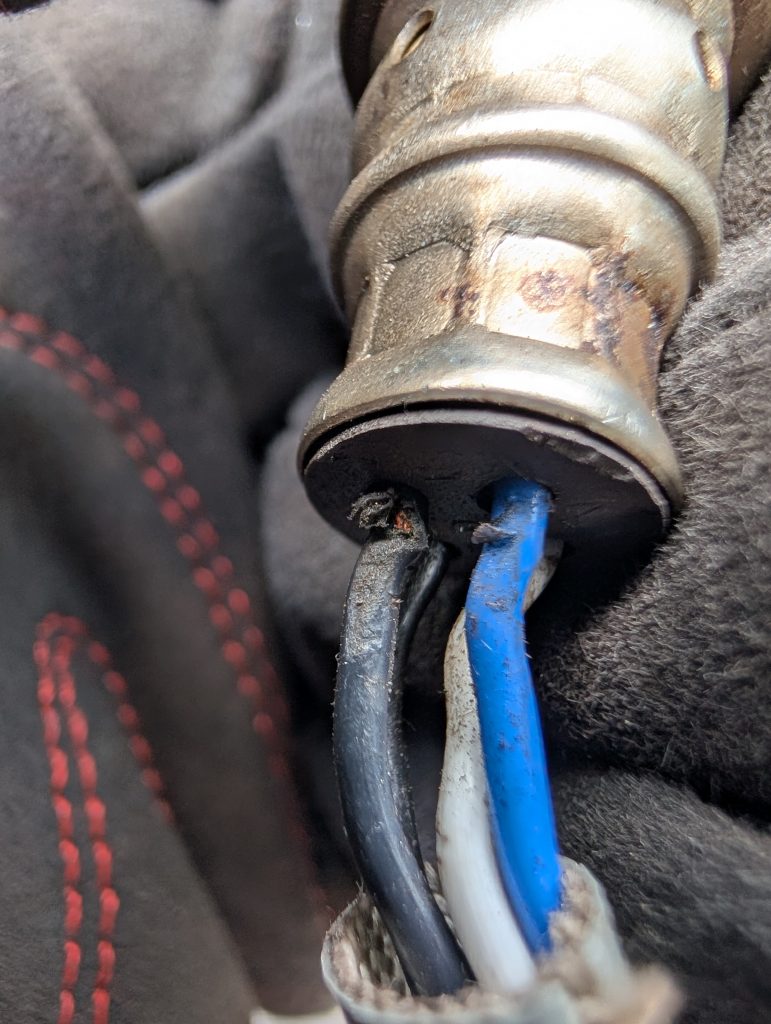
Looky here, exposed copper! Supposedly the P0606 and P0607 codes fire when the computer detects a discrepancy in voltage between the main CPU and the sub-CPU (whatever that is). If this copper was shorting out to the chassis (ground), that could easily have caused this indeed!
I was able to get the new system installed in the next 3ish hours, all except the catalytic-converter-to-intermediate-pipe connection. Turns out the pipes were the exact same size at that point, so I needed a butt-joint clamp instead of a C-Clamp. That arrives Sunday and will complete the project. But for now, this was a great success which saved about $2,000 or $3,000, depending how you look at it ($2k if you consider just the exhaust system, $3k if you also consider the ECU with it).
Oh, and don’t forget, while it is easier to remove oxygen sensors and exhaust system parts while they are hot due to thermal expansion, ya still gotta be careful, or you end up like me!
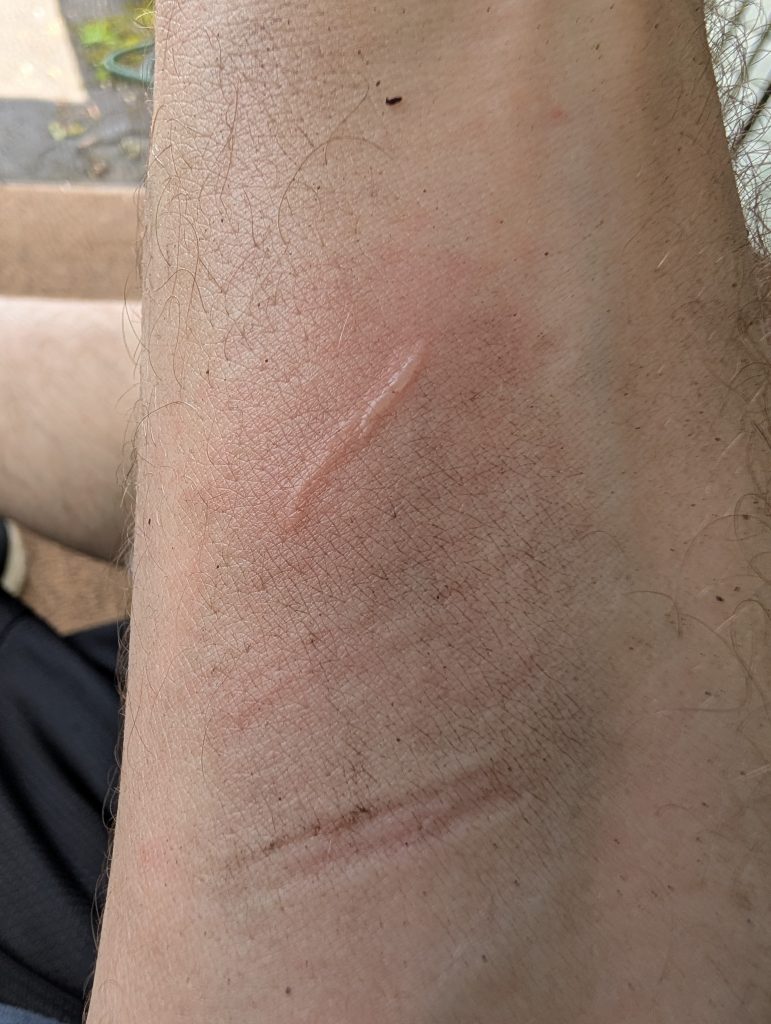
So at this point, I will install the new butt-joint clamp on Sunday and drive it around for a bit to verify the codes do not come back. If not, fantastic! And if they do, I will update this article. So as you read this, if there is nothing written/added after this sentence, problem solved!